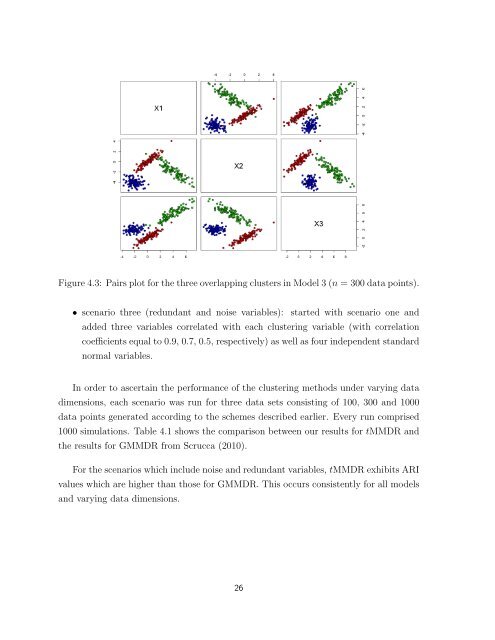Dimension Reduction for Model-based Clustering via Mixtures of ...
Dimension Reduction for Model-based Clustering via Mixtures of ...
Dimension Reduction for Model-based Clustering via Mixtures of ...
Create successful ePaper yourself
Turn your PDF publications into a flip-book with our unique Google optimized e-Paper software.
Figure 4.3: Pairs plot <strong>for</strong> the three overlapping clusters in <strong>Model</strong> 3 (n = 300 data points).• scenario three (redundant and noise variables): started with scenario one andadded three variables correlated with each clustering variable (with correlationcoefficients equal to 0.9, 0.7, 0.5, respectively) as well as four independent standardnormal variables.In order to ascertain the per<strong>for</strong>mance <strong>of</strong> the clustering methods under varying datadimensions, each scenario was run <strong>for</strong> three data sets consisting <strong>of</strong> 100, 300 and 1000data points generated according to the schemes described earlier. Every run comprised1000 simulations. Table 4.1 shows the comparison between our results <strong>for</strong> tMMDR andthe results <strong>for</strong> GMMDR from Scrucca (2010).For the scenarios which include noise and redundant variables, tMMDR exhibits ARIvalues which are higher than those <strong>for</strong> GMMDR. This occurs consistently <strong>for</strong> all modelsand varying data dimensions.26
















